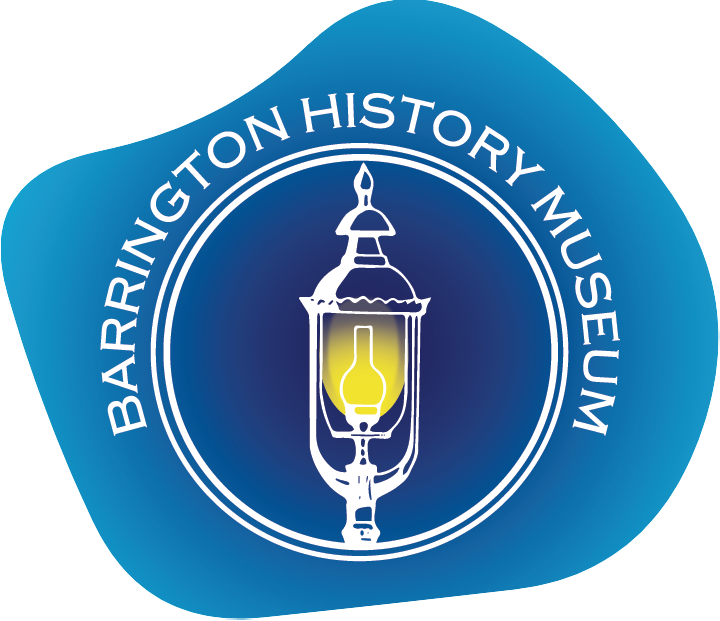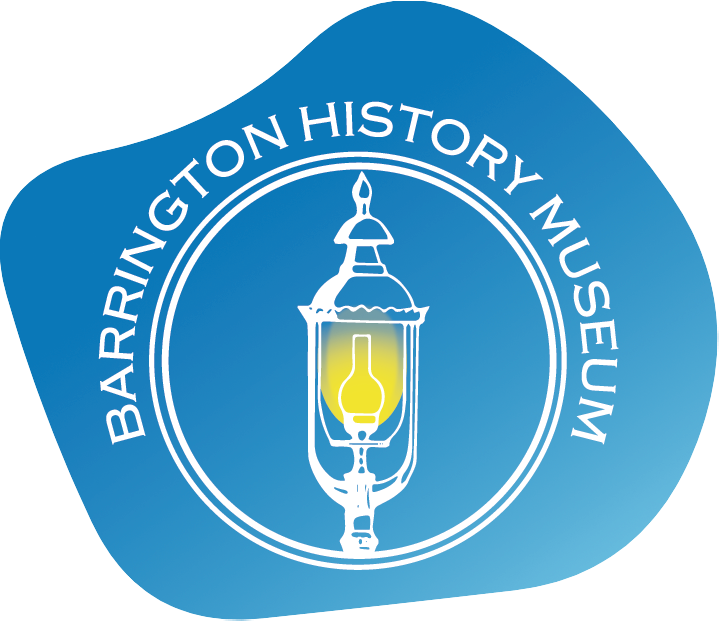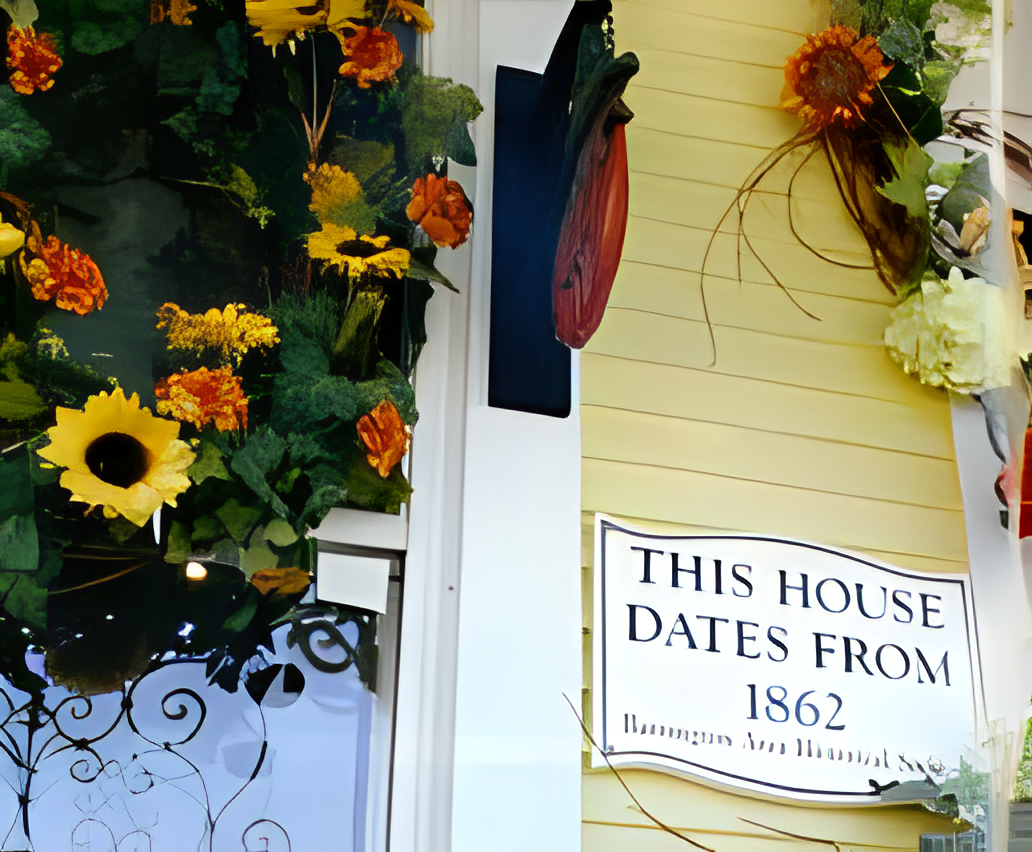Glimpses of Yesterday – Memories of Barrington
Published by The Barrington Area Historical Society, Inc. (Now Barrington History Museum), 1980 – 5th Printing, July 1988
In the early days of earth’s evolutionary life, the Mastodon roamed the Barrington area. Remains of this elephant-type animal were found buried in a peat bog near Interstate Hwy. 90, south of Barrington.
In more recent historical times, the late 1700’s and early 1800’s found this area interspersed with woods and rolling prairies, dotted with small lakes and peat bogs. The animals ranging yesterday’s Barrington can still be found in existence today. They included buffalo, deer, wolves, coyotes, beaver, ermine and many other small wildlife. The carrier pigeon flew through this area by the billions and were joined by large numbers of prairie chicken, quail, eagles and hawks.
The Potawatomie Indians were in this territory when the white men first arrived. The Chippewa and Ottawa tribes also made some use of this region. In 1832, the Blackhawk War broke out in the northwestern part of Illinois, and also in southern Wisconsin. Thousands of troops were sent in by the Government to control these uprisings. Loss in Indian lives was huge. Chief Blackhawk was captured and put in prison. The tribes represented among his slain followers included the Kickapoo, Sac, Winnebago, and Potawatomie. When peace was finally achieved in 1833, a treaty was signed in which the Indians agreed to leave this territory and move west of the Mississippi. They were allowed three years to accomplish their relocation, and were paid the sum of $100,000. The government agreed that no white man would be allowed a land grant to homestead in the territory before August, 1836.
However, as was the case with many Indian treaties, the white man broke his word. There are records of Jessie F. Miller and William Van Orsdal squatting on land in 1834, in a section of Barrington Township. This would be in the location of where the Barrington Center Church now is and also on the south side of Brinker Road. Of course, that was all heavily wooded territory, and later on they called that section Millers Grove. Records further show that in 1834, there were still about 500 Potawatomie Indians living in an encampment close to the land settled by Miller and Van Orsdal.
In 1836, more pioneers from the East migrated to this area after hearing tales of the fertile soil in Illinois. Some of these people originated from Great Barrington, Massachusetts, thus giving Barrington its name. The land grants issued to these pioneers were signed by President Tyler and later by President Polk. Most of the pioneers came by covered wagon, drawn by oxen. Others came by way of the Great Lakes to Chicago. Still more traveled up the Mississippi to the Illinois River and then overland to this region.
The pioneers’ first dwellings were log cabins with dirt floors. The cabins and the furnishings in them were very simple in design. Although it would take at least two men to construct a log cabin, all but the roof could be erected in a single day.
In December of 1840, our Barrington pioneers met in the cabin of William H. Otis, located at the southeast corner of Route 62 and Bartlett Roads. At that meeting they decided to incorporate the area as Barrington Township. The minutes taken at that meeting show eighteen votes for incorporation and one against. The following month, the pioneers again met in the same cabin to map out school districts. In 1846, a log school house was built where the Catlow Theater now stands on West Main Street. This building accommodated the few children of the area who would walk several miles to be taught only as much as the school master himself knew. Log schoolhouses built around that time had one pot-bellied stove with a jacket around part of it to deflect the heat. The first person, pupil or teacher, arriving first in the morning had to go to the wood-shed and get the key to unlock the school. That person was responsible for starting the fire in the stove
The Illinois-Wisconsin Railroad decided in 1854 to continue the railroad westward from Des Plaines to Harvard, Illinois. Engineers for the railroad purchased forty acres of land from Benjamin Felter whose log cabin at that time was located at Spring Creek and East Main Street. The engineers then laid out streets and lots on the Cook County side of Main Street, and moved a small railroad depot to the newly-purchased land.
At about the same time, a farmer named Willard Stevens owned eighty acres on the Lake County side of Main Street. He divided forty of his eighty acres in the same manner as the railroad engineers. These lots were measured in English terms, being one chain (sixty-six feet) by two chains (one hundred thirty-two feet).
A bit later, a roundhouse was built west of Spring Street. There was also a cattle chute, and farmers from around the area used to drive their cattle right down Main Street to reach the cattle chute. Trains with cattle cars would come as far as Barrington, then return the animals to market in Chicago.
In 1855, the first milled lumber house was built in Barrington, by Ed Lamey. It is still standing in its original location at 328 Franklin Street. Lumber for the house was brought in on the railroad.
Mud streets, dug wells, outside privies and candles for light were the up-to-date conveniences for that period. In 1857, M. B. McIntosh of 219 South Cook Street purchased the first kerosene lamp in Barrington. Dug wells with hand-pumps were the main source of water for all the townsfolk. There were three dug wells in the village streets for public use and for watering the horses. The first streets were mud or dust until gravel was finally used to improve them. By 1889, Main Street was graveled to the city limits, but the remaining streets were not improved for quite a while.
In 1863, the settlers decided to incorporate as the Village of Barrington. About three hundred people lived in the village at that time. The charter for incorporation was official in 1865. That year Homer Wilmarth was appointed the first Village Mayor. He was followed in 1866 by M. B. McIntosh, who was voted into office.
Prior to 1883 there was a grist mill on South Hough Street located near the present Hillside Avenue. The grist mill was powered by wind and was on the highest location in Barrington. In August, 1883, it burned completely. In 1884, a steam-powered grist mill was built just south of the railroad tracks east of North Hough Street. The owners would grind about eight barrels of flour a day, and much of it would be shipped by rail to other towns.
In Barrington’s early days, the town was protected from fire by a volunteer fire department. The volunteers were badly restricted in their efforts because they only had available three wells to use for their bucket brigade. In 1890, a fire broke out in the hotel on Main Street. In a short time, the fire had spread and was finally stopped by tying a heavy rope around a small building and then attaching the rope to the engine of the midnight train. The train pulled down the building, creating a fire-break. In 1892, another bad fire broke out in Ed Sabin’s saloon and consumed the entire block east of South Cook Street and between East Station Street and Park Avenue. In 1898, yet another block of business was destroyed. In order to better fight any future fires, the Village provided a water system for Barrington. That first deep well is still is use, located under the floor of the Village Hall. Barrington then purchased their first piece of fire equipment, a hose cart which had to be hauled to the fire by the volunteers. Later, the Village also purchased a hook and ladder wagon.
In 1898, the Telephone Company installed poles and lines in Barrington, and started with twenty subscribers. The same year, Barrington built an electric generating plant and, for the first time, Barrington residents moved into the new age of electric power.
As Barrington’s population increased, so too did the number of businesses and industries. The American Maleable Iron Works was constructed in 1892, but went bankrupt shortly after 1900, due to inferior castings. The Barrington Steam Laundry opened its doors in 1900, and enjoyed immediate and lasting success. In 1904, the Bowman Dairy built a milk bottling plant which later became the Jefferson Ice Plant. The location is now the site of the Ice House Shopping Mall. In those days, Barrington had a total of four milk processing plants, and many cheese factories. Farmers from all over this region brought their dairy products to Barrington for processing. The Jewel Tea Plant was built in 1929, and in the same year Ed Wichman opened his blacksmith shop for business. The blacksmith shop was moved in 1999 to it’s present location at the Barrington Area Historical Society compound.
In the last half century, Barrington has matched its strides to the rest of the world while retaining a strong tie to its beginnings. Just as those years hold many stories, so will the future years.
About the Author

William Klingenberg was a life-long resident of this area, tracing his family’s Barrington roots back to the 1850’s.
He was born on January 14, 1904, on a farm located on Harbor Road. At the age of two, Bill moved with his family to an 80-acre farm on Oak Knoll Road. He grew up there, but the farm is gone now, and has become the Barrington Hills Country Club golf course.
During his lifetime, Bill has distinguished himself in many ways. His experiences range from life as a farmer, test pilot, hot air balloonist, pilot instructor, barnstormer, businessman and innovator in the aeronautics industry, and a postal employee.
Bill sold his airplane and settled down when he married his wife, Edna, in the 1930’s. At that time, they both worked together to build their own home in Barrington.
Bill was active as Barrington’s town historian. His days were occupied collecting and documenting the history of Barrington’s early days, especially through oral histories from Barrington’s senior residents and also research on area structures for labeling as historic locations. Bill was also sought as a lecturer for the Museum, school groups, and other organizations. He was a past-President of the Barrington Historical Society, and one of its most respected members.


